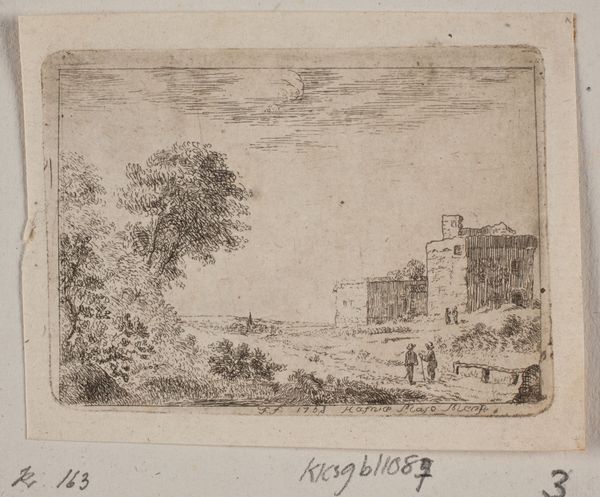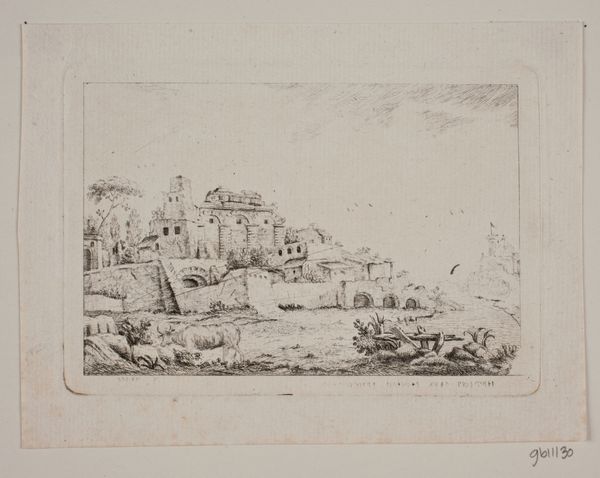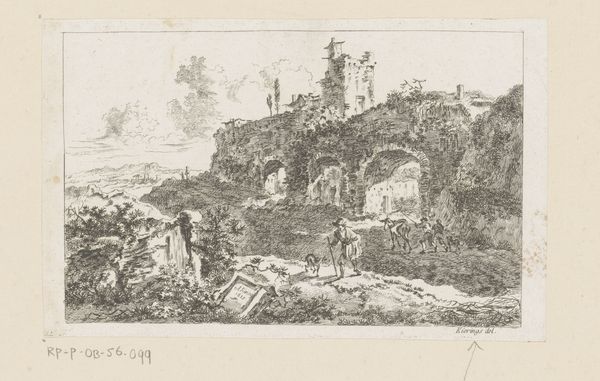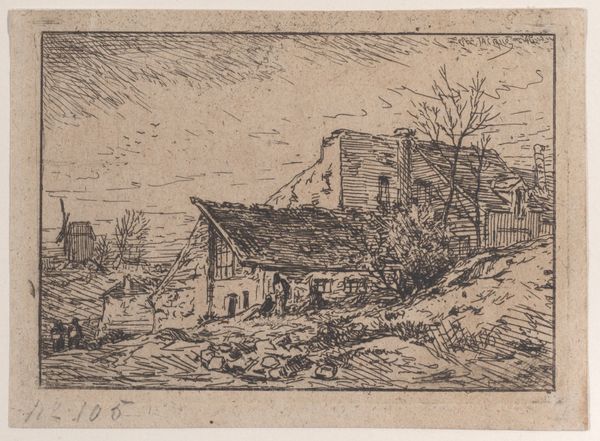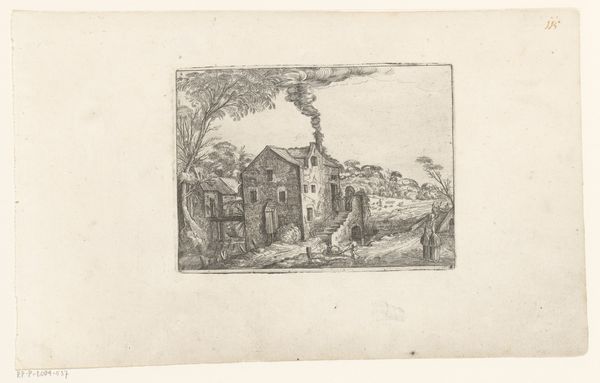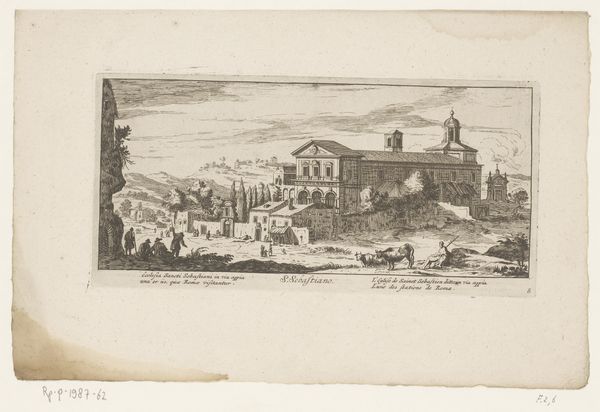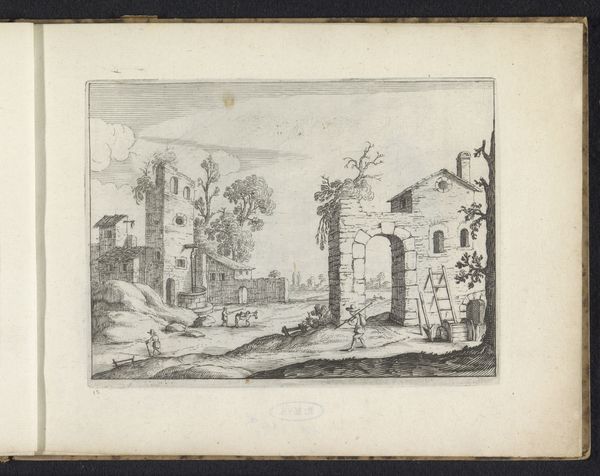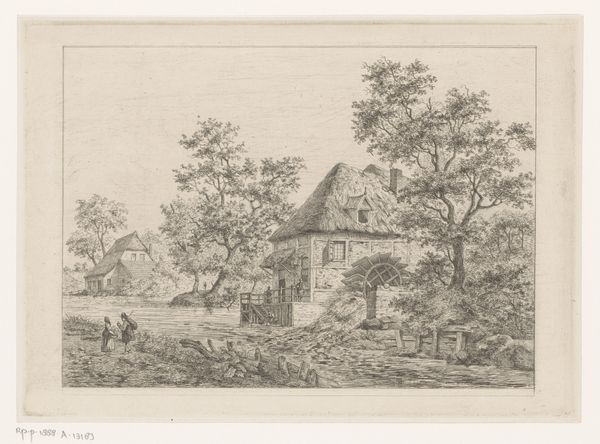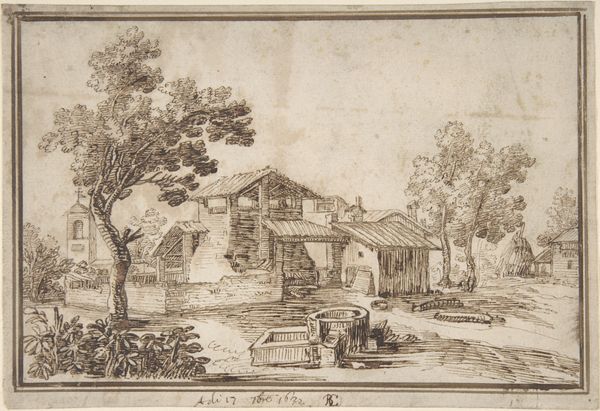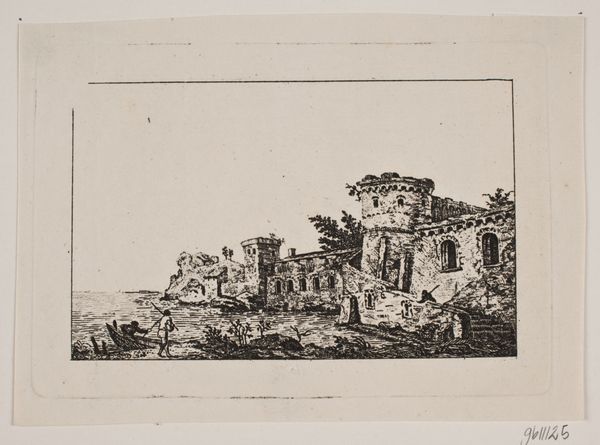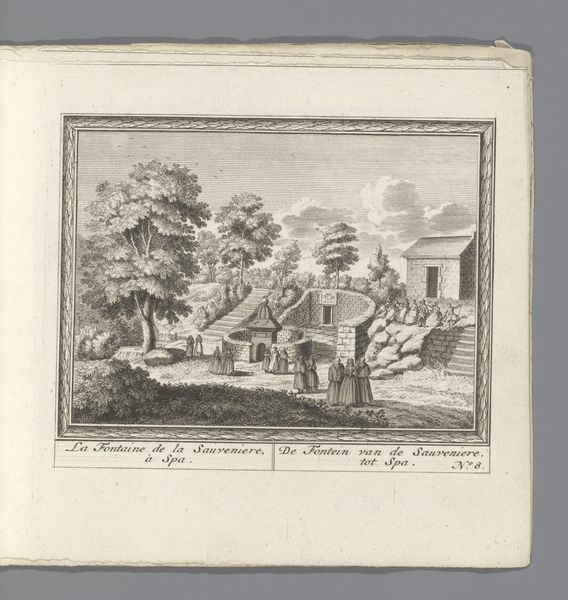
drawing, print, paper, engraving, architecture
#
drawing
# print
#
landscape
#
paper
#
engraving
#
architecture
Dimensions: 55 mm (height) x 78 mm (width) (plademaal)
Curator: Here we have B. Flügge's "Klosterbygning" from 1750, housed here at the SMK. What strikes you first about this small engraving? Editor: The scene feels secluded and tranquil. It is small, intimate... like a quiet meditation on faith and landscape, but quite detailed. I’m intrigued by how the engraving captures so much texture in such a miniature format. Curator: Absolutely. The materiality of the print itself is critical here. Flügge used engraving, a process of meticulously incising lines into a metal plate, to create this image. Think about the labor involved in producing these prints; it makes the multiplication of these images quite revolutionary. These prints became affordable and widespread. Editor: It makes you wonder who saw this and where. This image becomes a symbol of access and changing viewing habits. What do we know about Flügge? Curator: Flügge worked as an engraver and draughtsman in Denmark in the second half of the eighteenth century. "Klosterbygning," or "Monastery Building," portrays this religious structure integrated with nature, subtly questioning the societal power of institutions, perhaps. Notice how nature almost overpowers the architecture? Editor: And the path winding toward the building... who is allowed on it? Who is barred? Was it meant to highlight or challenge power dynamics? Curator: It likely invited such scrutiny. In the burgeoning public sphere, prints played a key role in shaping opinion and conveying information. It also gave us a new perspective on buildings and sites formerly exclusively visible by specific groups of people. The artform made power structures increasingly more accessible to debate. Editor: So, what was once limited and imposing becomes something circulated, debated, digested… this little print carries such a powerful charge when viewed within its moment. The texture, labor, and social context combine for a piece speaking far beyond its modest dimensions. Curator: Exactly. A reminder of how art, even in its seemingly smallest forms, can mirror and shape the tides of cultural shifts.
Comments
No comments
Be the first to comment and join the conversation on the ultimate creative platform.
